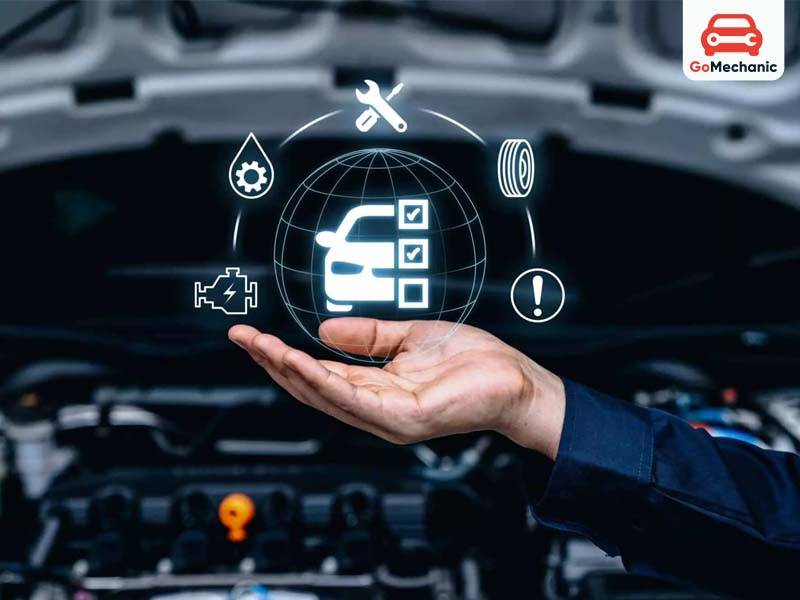Table of Contents
ToggleIntroduction: The Unavoidable Truth of Auto Repair Costs
Every car owner faces the same fundamental financial question: How do I prepare for the inevitable breakdown? Do you rely on a self-funded savings account, or do you purchase dedicated protection? This isn’t just a matter of preference; it’s a strategic financial decision.
At Auto Advantage Inc., we’ve specialized in extended auto warranties since 1979, and we’ve seen countless scenarios play out. The core debate boils down to two options: building an emergency fund or investing in an extended auto warranty. As certified financial protection experts, we’ll break down the pros, cons, and bottom-line costs of each choice, so you can make the smarter financial move for your vehicle and your budget.
2. The Case for the Dedicated Emergency Fund
Relying on a savings account—or self-insuring—is a popular strategy for financially disciplined car owners.
2.1 Fund Flexibility: Covering Any Expense
The greatest advantage of a dedicated emergency fund is its flexibility. If you need a new tire, have a dental emergency, or face a major repair, the money is available. It is liquid cash that can be used for any financial crisis, not just a car repair.
2.2 The Risk of Self-Insurance
The major pitfall, however, is the risk of underfunding. A sudden, catastrophic engine failure can cost you $3,000 to over $8,000. If your emergency fund only holds $2,000, you are instantly in debt or facing crippling financial stress. Relying solely on savings means you are always on the hook for the full repair price.
3. The Case for the Extended Auto Warranty
An extended auto warranty (also known as a Vehicle Service Contract) is a specialized form of insurance designed specifically to mitigate the risk of high car repair costs.
3.1 Financial Predictability and Budgeting
When you purchase an extended auto warranty from a trusted provider like Auto Advantage Inc., you replace an unknown risk with a predictable monthly payment. This is excellent for budgeting, as you know exactly what your vehicle protection costs each month. When a covered component breaks, you only pay your small deductible.
3.2 Hedging Against Catastrophic Failure
The warranty is a financial hedge. It is designed to cover the major failures—the ones that wipe out a typical emergency fund. Think transmission failure ($4,000−$6,000), or a total engine replacement ($6,000−$10,000+). For high-mileage or exotic vehicles, this protection is arguably indispensable.
3.3 Peace of Mind: A Priceless Factor
Beyond the dollars and cents, an extended auto warranty offers undeniable peace of mind. You drive knowing that if the worst happens, your financial liability is capped at the deductible, not the full real cost of major engine repairs.
4. The Real Cost Showdown: Warranty Payment vs. Major Engine Repairs
Let’s look at the numbers for a typical five-year-old mid-range sedan:
| Scenario | Emergency Fund (Self-Insured) | Extended Auto Warranty (Auto Advantage Inc.) |
| Average Monthly Cost | N/A (Based on savings discipline) | ≈$50−$120 |
| Year 3: Major Repair | Your savings account must cover 100% of the bill. | You pay your small deductible ($100−$250); the plan covers the rest. |
| Cost of Engine Head Gasket Failure | $1,500−$2,500 (Out-of-pocket) | $100 – $250 (Deductible) |
| Cost of Transmission Replacement | $4,000−$6,000 (Out-of-pocket) | $100 – $250 (Deductible) |
Export to Sheets
The math is clear: A modest monthly warranty payment protects you from bills that can be 10 to 50 times greater than your annual premium.
5. Our Expert Recommendation: The Hybrid Approach
As seasoned experts in extended car protection, we believe the smarter financial move for nearly everyone is a combination of both: The Hybrid Approach.
- Maintain a Core Emergency Fund: Keep a basic fund for small, non-covered expenses (like tires, glass, or minor maintenance) and general life emergencies.
- Purchase a High-Quality Extended Auto Warranty: Protect your budget from catastrophic engine failure and major component breakdown. By covering the largest risks with the warranty, your savings fund stays intact for life’s other necessities.
This strategy ensures both flexibility and comprehensive protection against the biggest financial risks associated with owning a vehicle.
6. Frequently Asked Questions (FAQs)
Q: Does a warranty cover regular wear and tear?
A: Most standard extended auto warranty plans do not cover items considered “wear and tear,” such as brake pads, tires, and oil changes. However, high-end exclusionary plans from providers like Auto Advantage Inc. may offer some limited coverage for high-tech components that often fail due to use. Always check your specific contract!
Q: Is an emergency fund better for an older car?
A: Not necessarily. Older, high-mileage vehicles are more likely to experience major, expensive breakdowns, making an extended car protection plan a critical financial shield. The risk of major repair dramatically outweighs the cost of the premium.
Q: What should be my priority if I can only afford one?
A: If you have a vehicle whose factory warranty is expiring, prioritizing the purchase of a reputable extended auto warranty should be your first step. It protects you from the $5,000 to $10,000 engine or transmission failure that could financially ruin your budget, a risk a small savings fund cannot counter.
Drive Smart. Choose Protection.
Ready to cap your liability and protect your budget from major car repair costs?
Don’t let the real cost of major engine repairs surprise you. Our plans are transparent, customizable, and designed to save you money in the long run.






